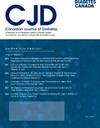High Prevalence and Common Forms of Maturity-onset Diabetes of the Young in Greenland
IF 2.3
4区 医学
Q3 ENDOCRINOLOGY & METABOLISM
引用次数: 0
Abstract
Objectives
Population studies have identified common genetic variants contributing substantially to the burden of diabetes in Greenland. However, the handling of suspected monogenic diabetes in diabetes clinics in Greenland has not been described. In this study we aimed to describe the referral rate, prevalence, and genetic causes of clinically identified monogenic diabetes in Greenland.
Methods
All diabetes patients in Greenland referred for genetic testing due to suspected monogenic diabetes between 2014 and July 2022 were tallied. Targeted short-read sequencing and Sanger sequencing of probands and their family members were used to screen for potentially deleterious variants in the maturity-onset diabetes of the young (MODY) genes GCK, HNF1A, HNF1B, and HNF4A. Clinical data were extracted from the electronic medical records, and whole-genome sequencing was performed for families with potentially deleterious variants for genetic ancestry analysis.
Results
Between 2014 and July 2022, 58 probands were referred for genetic testing, equivalent to 0.1% of the population. Five variants were identified: GCK p.F133L, GCK p.D205E, HNF1A c.1108G>T, HNF1B p.Q182∗, and HNF4A −178A>G. These variants were found in 11 probands and 19 family members, equivalent to a population prevalence of monogenic diabetes of 0.05%. Local ancestry analysis revealed that all the variants were found exclusively in Inuit haplotypes, despite all individuals being admixed with both Inuit and European genetic ancestry.
Conclusions
The rate of referral and prevalence of monogenic diabetes is substantially higher in Greenland than in other populations, and both rare and more common population-specific variants of Inuit genetic ancestry contribute to this high prevalence.
格陵兰青少年成熟型糖尿病的高患病率和常见形式
目的:人口研究已经确定了在格陵兰岛造成糖尿病负担的常见遗传变异。然而,格陵兰岛糖尿病诊所对疑似单基因糖尿病的处理尚未得到描述。我们的目的是描述格陵兰岛临床确定的单基因糖尿病的转诊率、患病率和遗传原因。方法:统计2014-2022年格陵兰岛所有因疑似单基因糖尿病而转诊进行基因检测的糖尿病患者。使用先证及其家族成员的靶向短读测序和Sanger测序来筛选成熟发病的年轻人糖尿病(MODY)基因GCK、HNF1A、HNF1B和HNF4A的潜在有害变异。从电子病历中提取临床数据,并对具有潜在有害变异的家庭进行全基因组测序,以进行遗传祖先分析。结果:在研究期间,58个先证者被转介进行基因检测,相当于人口的0.1%。鉴定出5个变异:GCK p.F133L、GCK p.D205E、HNF1A c.1108G>T、HNF1B p.Q182*、HNF4A -178A>G。这些变异在11个先证者和19个家庭成员中被发现,相当于0.05%的单基因糖尿病人群患病率。当地祖先分析显示,尽管所有个体都与因纽特人和欧洲人的遗传祖先混合,但所有的变异都只存在于因纽特人的单倍型中。结论:我们表明,格陵兰岛的单基因糖尿病转诊率和患病率明显高于其他人群,因纽特人遗传血统的罕见和更常见的人群特异性变异导致了高患病率。
本文章由计算机程序翻译,如有差异,请以英文原文为准。
求助全文
约1分钟内获得全文
求助全文
来源期刊

Canadian Journal of Diabetes
ENDOCRINOLOGY & METABOLISM-
CiteScore
4.80
自引率
4.00%
发文量
130
审稿时长
54 days
期刊介绍:
The Canadian Journal of Diabetes is Canada''s only diabetes-oriented, peer-reviewed, interdisciplinary journal for diabetes health-care professionals.
Published bimonthly, the Canadian Journal of Diabetes contains original articles; reviews; case reports; shorter articles such as Perspectives in Practice, Practical Diabetes and Innovations in Diabetes Care; Diabetes Dilemmas and Letters to the Editor.
 求助内容:
求助内容: 应助结果提醒方式:
应助结果提醒方式:


